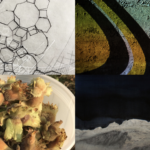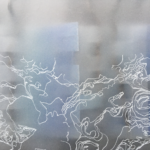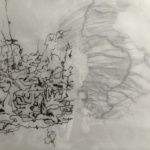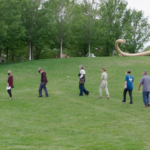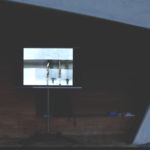Walking Based Practice : Curating in the Hedgerows
Annie Dugan
Part of Series
Mn Artists Presents guest curator frames an interdisciplinary event at the intersection of art and agriculture, designed to invite chance and wild growth.
Hedgerows are borders on the farm that foster beneficial insects. A little wilder and more diverse, they function as an overlapping ecosystem where the more highly controlled aspects of the farm intersect with the unmitigated aspects of the natural world. They can be planned and planted but they are designed to invite chance and wild growth.
These spaces serve as a metaphor for this project. It is a literal as well as conceptual space on the margins of both art and farming, where we allow for experimentation to foster beneficial diversity that can be brought back into both of these “fields” of study.
When I conceived of this event, I imagined a space of play and experimentation around the idea of terrestrial space and the interdependent systems essential for human survival. While that intention hasn’t changed, the last few years have broadened my conception of time, radically shifted my connection to land, and pushed and pulled my attention span. The artists I chose to present work at the Walker for Mn Artists Presents echo that elastic understanding of our place in the world. Tashia Hart, Kathy McTavish, Catherine Meier, and Cecilia Ramón are dynamic artists, expanding our perceptions of the simple divide between wild and cultivated spaces and bringing in a broadened conception of landscape art.
Outside, on the open grass space abutting the Cargill Lounge is a hand- mowed pattern by Cecila Ramón representing the thermohaline—the water current that connects all the oceans of the globe. Ramón brings an attention to the Global South, and reclaims map-making and scientific understanding from systems of oppression to tools for understanding and reflection. The artist leads tours along her path as well as a meditative mark-making exercise for visitors. A practice based in relational exchange and the ephemeral, Ramón’s work offers an alternative for art outside of a traditional exhibition structure.
Each of these artists explore systems, partnerships, and dynamics inherent in living on and with the earth. All are currently working in Northern Minnesota, but their practice highlights the larger webs and connections beyond a singular latitude and longitude.
